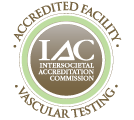The warm weather has finally arrived! You can all put away your winter gear and shed the layers as you welcome the Spring and Summer. Taking out the swimsuits, shorts and sun dresses you get the reminder of those varicose veins you have been meaning to take care of. Yes, you know what I am talking about: those bulging veins, those purple, blue and red clusters of veins. Besides the appearance of the varicose veins, they can sometimes cause burning, throbbing and itching. You are doing your best to get back into shape for the summer, isn’t it time for a new you, with new legs?
Have you noticed pain or swelling in your legs? Do your symptoms worsen when you are sitting or standing in one position? If so, you may have varicose veins which can affect the way your legs look and feel. Some vein problems are simply cosmetic. Others are a health threat which can damage tissue or even cause blood clots.
Consider these risk factors:
• Family history
• Being a women
• Being pregnant
• Age
• Sitting or standing for long periods
• Injury to a vein
• Recent surgery
• Being overweight
• Smoking
• Diabetes
• Legs stinging or aching
• Swelling of limbs
• Leg fatigue
• Scaly/dry skin
• Leg sores/wounds
Treatment
Whether your vein problem is cosmetic or a possible health threat, your doctor will work with you to develop a treatment plan. For any vein problem, your commitment to self-care is the mainstay of treatment. Your doctor will evaluate your leg veins to see if your symptoms are caused by a vein problem. The evaluation includes a health history and physical exam. Duplex ultrasound is a noninvasive imaging test which is preformed to create pictures of the veins and blood flow. This makes it possible to locate the sources of a vein problem.
Compression stockings are prescribed to treat all vein problems. Wearing them maybe the most important you do to manage your symptoms. The stockings help keep blood flowing towards the heart, so it is less likely to pool in the legs.
Exercising helps promote blood flow from your legs back toward your heart. Walking 30 minutes a day is most beneficial to vein health.
Elevation reduces swelling. Raising your feet above your heart 3-4 times per day for about 20-30 minutes will help reduce leg and ankle swelling and increase blood flow towards the heart and decrease blood pooling.
When sitting or standing for increased lengths of time; make sure you are wearing your compression stockings, do foot or leg exercises every half hour such as ankle pumps, ankle circles and toe touches.
Limit dry skin issues by keeping skin moist. Use a good moisturizer after every bath or shower. Being overweight puts extra pressure on your veins. Maintaining your proper body weight and avoiding salty, processed and canned foods will help with your vein health.
Vein problems can improve with proper treatment and self-care. You can work together with your doctor so that your legs look and feel better. By taking care of your veins now, you can help control your symptoms and keep your veins healthy.
If these treatments fail to alleviate your symptoms further minimally invasive procedures can be performed to help with your symptoms.
Endovenous ablation uses heat to treat a problem vein. A heat source is delivered by a catheter into a vein. The heat source is slowly with drawn, sealing the vein. The technique uses only a needle puncture, no incisions.
Microphlebectomy is used to remove small varicose veins. Short incisions are made in the skin with a needle or puncturing instrument. Then a special hook is used to remove the veins.
Ligation and stripping is used to remove on or both saphenous veins. Incisions are made at the top and bottom of the vein to be removed. The vein is tied off on both ends, then it is removed through the lower incision.
Ben U. Marsan, MD, FACS
Ben U. Marsan, MD, FACS, is a board certified general and vascular surgeon at The Vascular Experts, where he specializes in the latest endovascular techniques for arterial and venous diseases. His special interests are lower extremity revascularization, aortic aneurysms and carotid disease using endovascular techniques and open procedures. Additionally, Dr. Marsan specializes in thrombolysis for acute deep venous thrombosis and venous closure for painful varicosities.
Dr. Marsan received his medical degree from The Oregon Health & Sciences University. He then completed his general surgery residency at Flushing Hospital, affiliated with the Albert Einstein College of Medicine. Dr. Marsan is a Fellow of the American College of Surgeons and is an active member of the Society of Vascular Surgery, Clinical Society of Vascular Surgery, and Eastern Vascular Society. He serves as treasurer of the Southern Connecticut Society for Vascular Surgery.
Please contact Dr. Marsan at BMarsan@TheVascularExperts.com with any additional questions.
Vein ablation is a minimally invasive technique that destroys varicose leg veins.
Varicose veins are enlarged and twisted veins, often manifesting as dark blue or purple in color, near the surface of the skin and usually seen on the legs and ankles. Varicose veins may appear enlarged and protrude from the surface of the skin. Some even display a worm-like appearance just beneath the skin. Weakened valves are the cause of varicose veins and they typically develop over time. Normally, the one-way valves in a vein keep blood flowing up the leg and back toward the heart. When those valves don’t work as well as they should, blood pools in your legs and pressure builds up.



